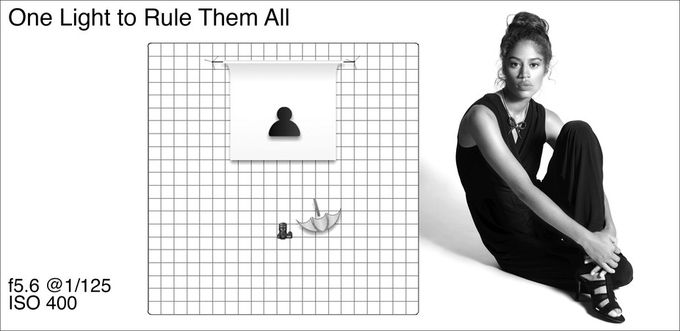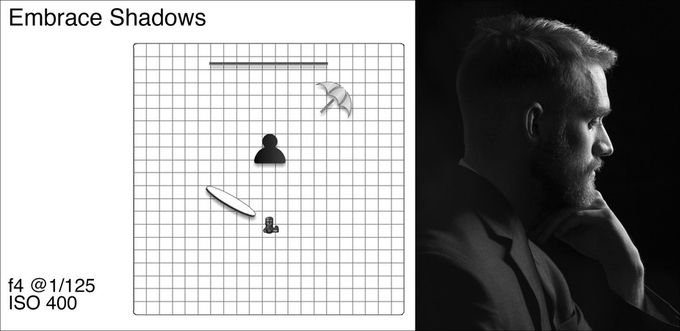The masters of photography in the 20th century have paved the way for modern photographers. Before digital capture, social media and smartphones, photography was developed into an art form and mastered by only a handful of talented artists.

Their creation of iconic images has shaped and inspired today’s photographers and this article offers some tips on how to achieve the same portrait lighting as portrait masters like Yousuf Karsh, George Hurrell and Richard Avedon.

Light From Above
Portrait photography in the 1930’s was often done with natural and available light as tungsten lighting was fragile and expensive. Iconic Hollywood glamour photographer George Hurrell became known for his use of a large overhead skylight in his studio. He photographed big stars like Greta Garbo and Joan Crawford utilizing bright afternoon light from above. The high contrast but diffused light resulted in creamy highlights and deep but flattering shadows below the chin, nose and brow bone. Hurrell often used the skylight as the main key light and added additional lights and reflectors to fill in shadow areas.
In the example above, a large rectangular softbox was placed above the subject to emulate the overhead light of a skylight. If needed, a white reflector can be added below the subject to bounce light up and soften shadows.

One Light to Rule Them All
When pressed for time or working with a small budget, there is a lot you can achieve with one light source. Most photographers start with natural light and when they are ready to start using studio lighting it can be intimidating to know where to begin. I highly recommend starting with one light and learning it inside and out. It then becomes much easier to add a second light and then a third and more as needed.
With so many lighting modifiers available, one light can result in a myriad of lighting effects. Using a large modifier like an umbrella or octobox helps to spread the light and give you more than enough to work with for a portrait. In the example above, a large umbrella was used with a bright white studio backdrop to illuminate both the subject and the background.

Embrace Shadows
Photography is all about light but it can also be about the absence of light. Portrait master Yousuf Karsh was one of the first photographers to experiment with shadows in portraiture. Rather than using a light in front as his key light, he often placed a light behind his subject and let it wrap around his subject’s silhouette. This resulted in a rim-lighting effect with more shadows on the face than was traditionally done.
In the example above, a white umbrella was placed behind the subject and to one side. A large white reflector was placed opposite the umbrella to bounce a little more light into the frame. This ensured that there was detail on the back of the subject so that the outline of his head was not lost in shadow.
Looking back at the portrait masters of the 20th century provides both abundant inspiration and learned wisdom. With technology in photography advancing everyday, we can take what we have learned from the masters and create something shiny and new.
--
Born and raised on the West Coast, Laura Tillinghast began making art at a young age. She explored many mediums until finally discovering photography when she was 17 years old. From that point on, she knew she had found the tool she was looking for to bring her imagination to life. Shooting primarily advertising and editorial content, you never know what you will find in front of Laura's lens. Whether it is a gorgeous model, a rock band or a bowl of oatmeal, she shoots with the same goal in mind; make it beautiful. See more of Laura’s work at her website:
lauratillinghast.com

